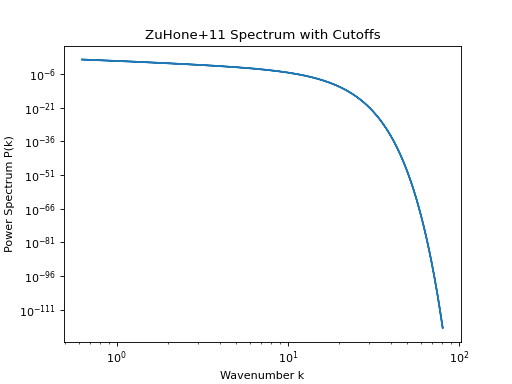pisces.math_utils.random_fields.generate_zh11_power_spectrum#
- pisces.math_utils.random_fields.generate_zh11_power_spectrum(amplitude: float = 1.0, k0: float = 1.0, k1: float = 5.0) Callable[source]#
Generate a Kolmogorov-like power spectrum following ZuHone et al. (2011).
The spectrum is defined as
\[P(k) = A \, k^{-11/3} \, \exp\!\left[-\left(\frac{k}{k_0}\right)^2\right] \exp\!\left[-\frac{k_1}{k}\right],\]where
\(A\) is the normalization amplitude,
\(k_0\) sets the high-wavenumber (small-scale) cutoff,
\(k_1\) sets the low-wavenumber (large-scale) cutoff.
- Parameters:
- Returns:
A function
P(kx, ky, ...)that takes arrays of wavenumber components and returns the ZuHone+11 spectrum evaluated on that grid.- Return type:
Callable
Examples
from pisces.math_utils.random_fields import generate_zh11_power_spectrum L, n = 10.0, 256 k_grid = np.fft.fftfreq(n, d=L/n) * 2 * np.pi k_mag = np.abs(k_grid) ps_func = generate_zh11_power_spectrum(amplitude=1.0, k0=5.0, k1=0.5) ps_array = ps_func(k_mag) import matplotlib.pyplot as plt plt.loglog(k_mag[1:], ps_array[1:]) # skip k=0 plt.xlabel('Wavenumber k') plt.ylabel('Power Spectrum P(k)') plt.title('ZuHone+11 Spectrum with Cutoffs') plt.show()
(
Source code,png,hires.png,pdf)